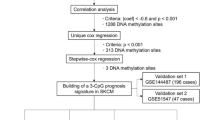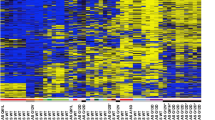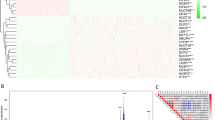Abstract
Aberrant methylation of CpG islands in promoter regions of tumor suppressor genes (TSG) has been demonstrated in epithelial origin tumors. However, the methylation profiling of tumor-related gene promoter regions in cutaneous melanoma tumors has not been reported. Seven known or candidate TSGs that are frequently hypermethylated in carcinomas were assessed by methylation-specific polymerase chain reaction (MSP) in 15 melanoma cell lines and 130 cutaneous melanoma tumors. Four TSGs were frequently hypermethylated in 86 metastatic tumor specimens: retinoic acid receptor-β2 (RAR-β2) (70%), RAS association domain family protein 1A (RASSF1A) (57%), and O6-methylguanine DNA methylatransferase (MGMT) (34%), and death-associated protein kinase (DAPK) (19%). Hypermethylation of MGMT, RASSF1A, and DAPK was significantly lower in primary melanomas (n=20) compared to metastatic melanomas. However, hypermethylation of RAR-β2 was 70% in both primary and metastatic melanomas. Cell lines had hypermethylation profiles similar to those of metastatic melanomas. The analysis of these four markers of metastatic tumors demonstrated that 97% had ⩾1 gene(s) and 59% had ⩾2 genes hypermethylated. The methylation of genes was verified by bisulfite sequencing. The mRNA transcripts could be re-expressed in melanoma cell lines having hypermethylated genes following treatment with 5′-aza 2′-deoxycytidine (5Aza-dC). Analysis of melanoma patients’ plasma (preoperative blood; n=31) demonstrated circulating hypermethylated MGMT, RAR-β2, and RASSF1A DNA for at least one of the markers in 29% of the patients. Our findings indicate that the incidence of TSG hypermethylation increases during tumor progression. Methylation of TSG may play a significant role in cutaneous melanoma progression.
This is a preview of subscription content, access via your institution
Access options
Subscribe to this journal
Receive 50 print issues and online access
$259.00 per year
only $5.18 per issue
Buy this article
- Purchase on Springer Link
- Instant access to full article PDF
Prices may be subject to local taxes which are calculated during checkout



Similar content being viewed by others
Abbreviations
- ATRA:
-
all-trans-retinoic acid
- 5Aza-dC:
-
5′-aza 2′-deoxycytidine
- GAPDH:
-
glyceraldehyde-3-phosphate dehydrogenase
- DAPK:
-
death-associated protein kinase
- GSTP1:
-
glutathione S-transferase P1
- MGMT:
-
O6-methylguanine DNA methylatransferase
- MSP:
-
methylation-specific polymerase chain reaction
- RT–PCR:
-
reverse transcriptase-polymerase chain reaction
- RAR-β2:
-
retinoic acid receptor-β2
- RASSF1A:
-
RAS association domain family protein 1A
- and TSG:
-
tumor suppressor gene
References
Baylin SB and Herman JG . (2000). Trends Genet., 16, 168–174.
Bostick PJ, Morton DL, Turner RR, Huynh KT, Wang HJ, Elashoff R, Essner R and Hoon DS . (1999). J. Clin. Oncol., 17, 3238–3244.
Chen CM, Chen HL, Hsiau TH, Hsiau AH, Shi H, Brock GJ, Wei SH, Caldwell CW, Yan PS and Huang TH . (2003). Am. J. Pathol., 163, 37–45.
Christmann M, Pick M, Lage H, Schadendorf D and Kaina B . (2001). Int. J. Cancer., 92, 123–129.
Dammann R, Li C, Yoon JH, Chin PL, Bates S and Pfeifer GP . (2000). Nat. Genet., 25, 315–319.
Dammann R, Yang G and Pfeifer GP . (2001). Cancer Res., 61, 3105–3109.
Davies H, Bignell GR, Cox C, Stephens P, Edkins S, Clegg S, Teague J, Woffendin H, Garnett MJ, Bottomley W, Davis N, Dicks E, Ewing R, Floyd Y, Gray K, Hall S, Hawes R, Hughes J, Kosmidou V, Menzies A, Mould C, Parker A, Stevens C, Watt S, Hooper S, Wilson R, Jayatilake H, Gusterson BA, Cooper C, Shipley J, Hargrave D, Pritchard-Jones K, Maitland N, Chenevix-Trench G, Riggins GJ, Bigner DD, Palmieri G, Cossu A, Flanagan A, Nicholson A, Ho JW, Leung SY, Yuen ST, Weber BL, Darrow TL, Paterson H, Marais R, Marshall CJ, Wooster R, Stratton MR and Futreal PA . (2002). Nature., 417, 949–954.
Demary K, Wong L, Liou JS, Faller DV and Spanjaard RA . (2001). Endocrinology., 142, 2600–2605.
Eads CA, Danenberg KD, Kawakami K, Saltz LB, Danenberg PV and Laird PW . (1999). Cancer Res., 59, 2302–2306.
Esteller M, Corn PG, Baylin SB and Herman JG . (2001). Cancer Res., 61, 3225–3229.
Esteller M, Hamilton SR, Burger PC, Baylin SB and Herman JG . (1999). Cancer Res., 59, 793–797.
Esteller M and Herman JG . (2002). J. Pathol., 196, 1–7.
Evron E, Dooley WC, Umbricht CB, Rosenthal D, Sacchi N, Gabrielson E, Soito AB, Hung DT, Ljung B, Davidson NE and Sukumar S . (2001). Lancet, 357, 1335–1336.
Fujiwara Y, Chi DD, Wang H, Keleman P, Morton DL, Turner R and Hoon DS . (1999). Cancer Res., 59, 1567–1571.
Goessl C, Krause H, Muller M, Heicappell R, Schrader M, Sachsinger J and Miller K . (2000). Cancer Res., 60, 5941–5945.
Harden SV, Tokumaru Y, Westra WH, Goodman S, Ahrendt SA, Yang SC and Sidransky D . (2003). Clin. Cancer Res., 9, 1370–1375.
Jeronimo C, Usadel H, Henrique R, Oliveira J, Lopes C, Nelson WG and Sidransky D . (2001). J. Natl. Cancer Inst., 93, 1747–1752.
Johnson PJ and Lo YM . (2002). Clin. Chem., 48, 1186–1193.
Jones PA and Baylin SB . (2002). Nat. Rev. Genet., 3, 415–428.
Kurie JM, Lotan R, Lee JJ, Lee JS, Morice RC, Liu DD, Xu XC, Khuri FR, Ro JY, Hittelman WN, Walsh GL, Roth JA, Minna JD and Hong WK . (2003). J. Natl. Cancer Inst., 95, 206–214.
Lo KW, Kwong J, Hui AB, Chan SY, To KF, Chan AS, Chow LS, Teo PM, Johnson PJ and Huang DP . (2001). Cancer Res., 61, 3877–3881.
Mangelsdorf DJ and Evans RM . (1995). Cell, 83, 841–850.
Maruyama R, Toyooka S, Toyooka KO, Harada K, Virmani AK, Zochbauer-Muller S, Farinas AJ, Vakar-Lopez F, Minna JD, Sagalowsky A, Czerniak B and Gazdar AF . (2001). Cancer Res., 61, 8659–8663.
Paz MF, Fraga MF, Avila S, Guo M, Pollan M, Herman JG and Esteller M . (2003). Cancer Res., 63, 1114–1121.
Pfeifer GP, Yoon JH, Liu L, Tommasi S, Wilczynski SP and Dammann R . (2002). Biol. Chem., 383, 907–914.
Rosas SL, Koch W, da Costa Carvalho MG, Wu L, Califano J, Westra W, Jen J and Sidransky D . (2001). Cancer Res., 61, 939–942.
Shi H, Wei SH, Leu YW, Rahmatpanah F, Liu JC, Yan PS, Nephew KP and Huang TH . (2003). Cancer Res., 63, 2164–2171.
Sidransky D . (2002). Nat. Rev. Cancer, 2, 210–219.
Sirchia SM, Ren M, Pili R, Sironi E, Somenzi G, Ghidoni R, Toma S, Nicolo G and Sacchi N . (2002). Cancer Res., 62, 2455–2461.
Smiraglia DJ, Rush LJ, Fruhwald MC, Dai Z, Held WA, Costello JF, Lang JC, Eng C, Li B, Wright FA, Caligiuri MA and Plass C . (2001). Hum. Mol. Genet., 10, 1413–1419.
Spanjaard RA, Ikeda M, Lee PJ, Charpentier B, Chin WW and Eberlein TJ . (1997). J. Biol. Chem., 272, 18990–18999.
Spugnardi M, Tommasi S, Dammann R, Pfeifer GP and Hoon DS . (2003). Cancer Res., 63, 1639–1643.
Taback B, Fujiwara Y, Wang HJ, Foshag LJ, Morton DL and Hoon DS . (2001). Cancer Res., 61, 5723–5726.
Takeuchi H, Kuo C, Morton DL, Wang HJ and Hoon DS . (2003). Cancer Res., 63, 441–448.
Toyooka S, Maruyama R, Toyooka KO, McLerran D, Feng Z, Fukuyama Y, Virmani AK, Zochbauer-Muller S, Tsukuda K, Sugio K, Shimizu N, Shimizu K, Lee H, Chen CY, Fong KM, Gilcrease M, Roth JA, Minna JD and Gazdar AF . (2003). Int. J. Cancer, 103, 153–160.
Ueki T, Toyota M, Sohn T, Yeo CJ, Issa JP, Hruban RH and Goggins M . (2000). Cancer Res., 60, 1835–1839.
Usadel H, Brabender J, Danenberg KD, Jeronimo C, Harden S, Engles J, Danenberg PV, Yang S and Sidransky D . (2002). Cancer Res., 62, 371–375.
Widschwendter M, Berger J, Hermann M, Muller HM, Amberger A, Zeschnigk M, Widschwendter A, Abendstein B, Zeimet AG, Daxenbichler G and Marth C . (2000). J. Natl. Cancer Inst., 92, 826–832.
Widschwendter M and Jones PA . (2002). Oncogene, 21, 5462–5482.
Zochbauer-Muller S, Fong KM, Virmani AK, Geradts J, Gazdar AF and Minna JD . (2001). Cancer Res., 61, 249–255.
Acknowledgements
This work was supported in part by NIH NCI R21 CA100314, PO CA 29605 Project II, and PO CA 13917 Project II and Roy E Coates Foundation.
Author information
Authors and Affiliations
Corresponding author
Rights and permissions
About this article
Cite this article
Hoon, D., Spugnardi, M., Kuo, C. et al. Profiling epigenetic inactivation of tumor suppressor genes in tumors and plasma from cutaneous melanoma patients. Oncogene 23, 4014–4022 (2004). https://doi.org/10.1038/sj.onc.1207505
Received:
Revised:
Accepted:
Published:
Issue Date:
DOI: https://doi.org/10.1038/sj.onc.1207505
Keywords
This article is cited by
-
Prediction and Analysis of Skin Cancer Progression using Genomics Profiles of Patients
Scientific Reports (2019)



